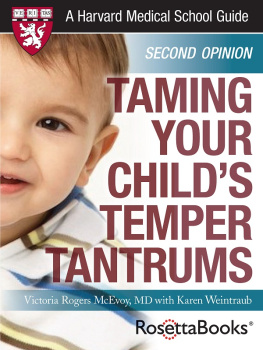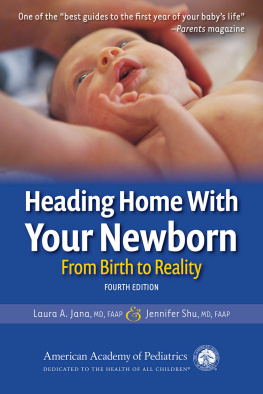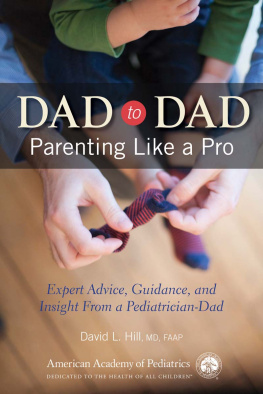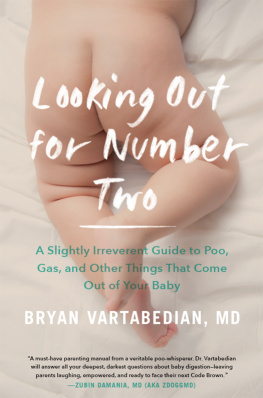About the Authors
VICTORIA ROGERS McEVOY, MD, grew up in New York and was number three in the United States Lawn Tennis Association rankings for U.S. women. She left tennis to pursue a career in medicine and graduated in 1975 from Harvard Medical School. She trained at Boston City Hospital, New England Medical Center, Childrens Hospital, and Massachusetts General Hospital. She has been a practicing pediatrician in the greater Boston area for more than thirty years.
Dr. McEvoy is assistant professor of pediatrics at Harvard Medical School and is a senior pediatrician on the staff of Massachusetts General Hospital. She is the chief of pediatrics of Mass General West Medical Group. Her articles have appeared in the Boston Globe, Boston Herald, Harvard Medical School Alumni Bulletin, Medical Economics, AMA News, Pallas Athena, Contemporary Pediatrics, Journal of the American Medical Womens Association, and Pediatric Management. Her column The Exam Room appeared in the Boston Globe. She was an associate editor of the Harvard Medical School Family Health Guide and wrote a blog in the health section of gather.com. Dr. McEvoy was one of the physicians featured in the best-selling book How Doctors Think by Jerome Groopman, MD, Professor of Medicine at Harvard Medical School.
Dr. McEvoy and her husband, Earl, will celebrate their thirty-ninth anniversary in 2010. They raised four children and have three grandchildren.
FLORENCE ISAACS is a journalist specializing in health/medicine, relationships, and etiquette, and is the author or co-author of nine books. Some of her books include the best-selling Just a Note to Say... The Perfect Words for Every Occasion; What Do You Say When... Talking to People with Confidence on Any Social or Business Occasion; When the Man You Love Is Ill; and Toxic Friends/True Friends.
She writes often for New Jersey Medical Schools Pulse magazine and has contributed articles to Readers Digest, Parade, Womans Day, Good Housekeeping, Redbook, Parents, and other major national publications. Her monthly column appears on www.legacy.com. She is a past president of the American Society of Journalists and Authors. She grew up in Brooklyn and lives and works in Manhattan.
Acknowledgments
I became a pediatrician because I enjoy children and interacting with familiesand writing this book for parents has been a uniquely rewarding experience. It is also exciting when you discover a partner who complements you. In this case, I am not talking about my spouse, but rather my writing partner, Florence Isaacs. Weve worked closely together as a team to produce a book that we hope will make this first year of your babys life less confusing and stressful and more fun. We are both grateful to our editor Mary Norris, whose wise guidance has been invaluable, and to our agent, the intrepid Linda Konner. I also thank Julie Silver, MD, Chief Editor of Harvard Health Publications, without whose support this book would not have been possible.
Thanks to my family, of course, and to all the childrenmy own and the many patients who have taught me so much over the years.
Victoria Rogers McEvoy, MD
Collaborating on a book can be a difficult balancing act. Fortunately, I worked with Vicky McEvoy, who is brilliant, kind, and funand made the process of creating this book a joy. I also thank six-month-old Joshua Harvey Isaacs, my first grandchild and the light of my life. He was born as we worked on this project and made the book come alive for me.
Florence Isaacs
Bibliography
CHAPTER 1: SLEEP
Bedtimes
Mindell, J. A., A. Sadeh, B. Wiegand, T. H. How, and D. Y. T. Goh, (in press). Cross-Cultural Differences in Infant and Toddler Sleep. Sleep Medicine, (2008).
Safety
The catch with Co-Sleepers. http://blogs.consumerreports.org/baby/2007/04.
Coleman-Phox, Kimberly, Roxana Odouli, and De-Kun Li. Use of a Fan During Sleep and the Risk of Sudden Infant Death Syndrome. Archives of Pediatrics and Adolescent Medicine 162, no. 10 (October 2008): 96368.
Hauck, F. R., O. O. Omojokun, and M. S. Siadaty. Do Pacifiers Reduce the Risk of sudden infant Death Syndrome? A meta-analysis. Pediatrics 116, no. 5 (November 2005): 71623.
Roffwarg, Howard P., Joseph N. Muzio, and William C. Dement. Ontogenic Development of Human Sleep-Dream Cycle. Science 152, no. 3722 (April 29, 1966): 60419.
Safe Sleep for Your Baby: Ten Ways to Reduce the Risk of Sudden Infant Death Syndrome (SIDS). National Institute of Child Health and Human Development. www.nichd.nih.gov/publications/pubs/safe_sleep_gen.cfm.
Shapiro-Mendoza, Carrie K., Melissa Kimball, Kay M. Tomashek, Robert N. Anderson, and Sarah Blanding. US Infant Mortality Trends Attributable to Accidental Suffocation and Strangulation in Bed from 1984 through 2004: Are Rates Increasing? Pediatrics 123 no. 2 (February 2009): 53339.
SIDS
American Academy of Pediatrics Policy Statement, The Changing Concept of Sudden Infant Death Syndrome: Diagnostic Coding Shifts, Controversies Regarding the Sleeping Environment and New Variables to Consider in Reducing Risk Pediatrics 116 no. 5 (November 2005). Statement of reaffirmation: Pediatrics 123 no. 1/Jan. 2009: http://aappolicy.aappublications.org/cgi/content/abstract/pediatrics;116/5/1245.
CHAPTER 2: BREASTFEEDING
General Findings
Breastfeeding in the United States: Findings from the National Health and Nutrition Examination Survey, 1999-2006. NCHS Data Brief, Number 5, April 2008. Centers for Disease Control and Prevention. www.cdc.gov/nchs/data/databriefs/db05.htm.
Research on Breastfeeding. National Institute of Child Health and Human Development, September 15, 2006. www.nichd.nih.gov/womenshealth/research/pregbirth/breastfeed.cfm.
Pumps
Breast Pumps. Consumer Reports. www.consumerreports.org/cro/babies-kids/baby-toddler/eating-and-sleeping/breastpumps/breast-pumps-1105/overview.
Storing Breast Milk
Breastfeeding Report Card. 2009: www.cdc.gov/BREASTFEEDING/DATA/report_card.htm.
Proper Handling and Storage of Human Milk. Centers for Disease Control, May 22, 2007. www.cdc.gov/breastfeeding/recommendations/handling_breastmilk.htm.
Spencer, Jeanne P., Luis S. Gonzalez III, and Donna J. Barnhart. Medications in the Breast-Feeding Mother. American Family Physician, July 1, 2001.
Wet-Nursing in France, Wet-Nursing in England, Wet Nursing in Germany, Wet-Nursing in the United States, Encyclopedia of Children and Childhood in History and Society. www.faqs.org/childhood/Th-W/Wet-Nursing.html.
CHAPTER 3: FOOD AND NUTRITION
Food Safety
Once Baby Arrives: Food Safety for Moms-to-Be. U.S. Food and Drug Administration Center for Food Safety and Applied Nutrition. www.fda.gov/Food/ResourcesForYou/consumers/.../ucm089629.html.
High Chairs
High Chairs. Consumer Reports. www.consumerreports.org/cro/babies-kids/baby-toddler/eating-and-sleeping/high-ch.
Mayr, J. M., U. Seebacher, G. Schimpl, and F. Fiala. Highchair Accidents. Acta Paediatr 88, no. 3 (March 1999): 31922. www.ncbi.nlm.nih.gov/pubmed/10229045.
Organic Foods
Magkos, F., F. Arvaniti, and A. Zampelas. Organic Food or Food for Thought? A Review of the Evidence. International Journal of Food Sciences and Nutrition 54, no. 5 (September 2003): 35771.
Organic Production/Organic Food: Information Access Tools, USDA, June 2007. www.usda.gov/afsic/pubs/ofp/ofp.shtml.
Tasiopoulou, S., A. M. Chiodini, F. Vellere, and S. Visentin. Results of the Monitoring Program of Pesticide Residues in Organic Food of Plant Origin in Lombardy (Italy). Journal of Environmental Science and Health Part B







